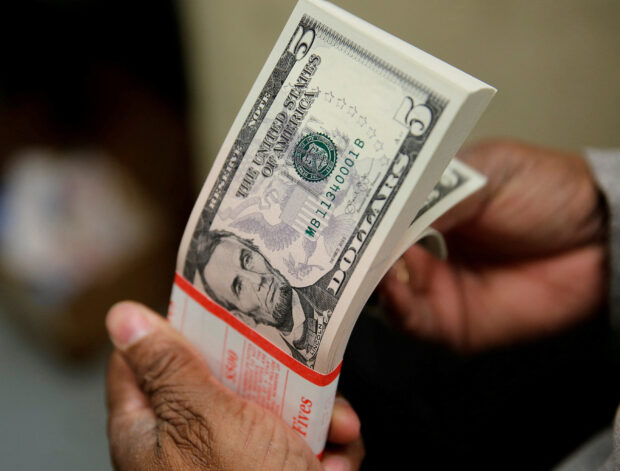SINGAPORE – The dollar weakened on Tuesday after Federal Reserve officials signaled that the central bank was nearing the end of its tightening cycle, though it traded in a tight range ahead of a key U.S. inflation report.
Several Fed officials said on Monday the central bank will likely need to raise interest rates further to bring down still-high inflation, but that the end to its current monetary policy tightening cycle is getting close.
The comments knocked the greenback to a two-month low of 101.88 against a basket of currencies in early Asia trade, as traders pared back their expectations of how much further U.S. interest rates have to rise.
U.S. interest rate expectations have been a key driver of the dollar since the Fed began its tightening cycle last year.
Sterling meanwhile hit a fresh 15-month high of $1.2869, while the euro tacked on 0.03 percent to $1.1004.
“The FOMC speak was the main focus of yesterday and officials who spoke reiterated the recent message that a couple more rate hikes are likely in coming months, so not really a surprise there,” said Carol Kong, a currency strategist at Commonwealth Bank of Australia.
Markets are now focusing their attention on U.S. inflation data out on Wednesday, which will provide more clarity on the progress the Fed has made in its fight against stubbornly high consumer prices.
A survey from the New York Federal Reserve showed on Monday waning near-term inflation expectations among Americans, who said last month they were expecting the weakest near-term inflation gains in just over two years.
“If we do get a strong CPI report (tomorrow), that may help market pricing for a second rate hike from the FOMC (after July) and drive the dollar a little bit higher,” said Kong. “But I don’t think any upside will be material given the fact that we are near the top of the FOMC tightening cycle.”
The Japanese yen rose to a near one-month high of 141.15 per dollar on Tuesday and last bought 141.43 per dollar, drawing support from a slump in U.S. Treasury yields.
The dollar/yen pair is particularly sensitive to U.S. yields as interest rates in Japan are anchored near zero.
Elsewhere, the Australian dollar gained 0.16 percent to $0.6687, while the New Zealand dollar added 0.06 percent to $0.6216.
Gains in the two Antipodean currencies against the dollar were capped by China’s faltering economic recovery, as both are often used as a liquid proxy for the Chinese yuan.
The yuan was last marginally higher at 7.2254 per dollar in the offshore market.
Data on Monday showed that China’s producer prices fell at their fastest pace in over seven years in June, while consumer prices teetered on the edge of deflation.
“China’s year-over-year CPI and PPI data for June, which came in below expectations and points to China’s ongoing struggle with deflation in the absence of strong aggregate demand,” said Macquarie strategists in a note.
“For traders to get positive on China, it seems that nothing short of a forceful stimulus program will be needed.”
Read Next
Subscribe to INQUIRER PLUS to get access to The Philippine Daily Inquirer & other 70+ titles, share up to 5 gadgets, listen to the news, download as early as 4am & share articles on social media. Call 896 6000.
For feedback, complaints, or inquiries, contact us.
For all the latest Business News Click Here
For the latest news and updates, follow us on Google News.

